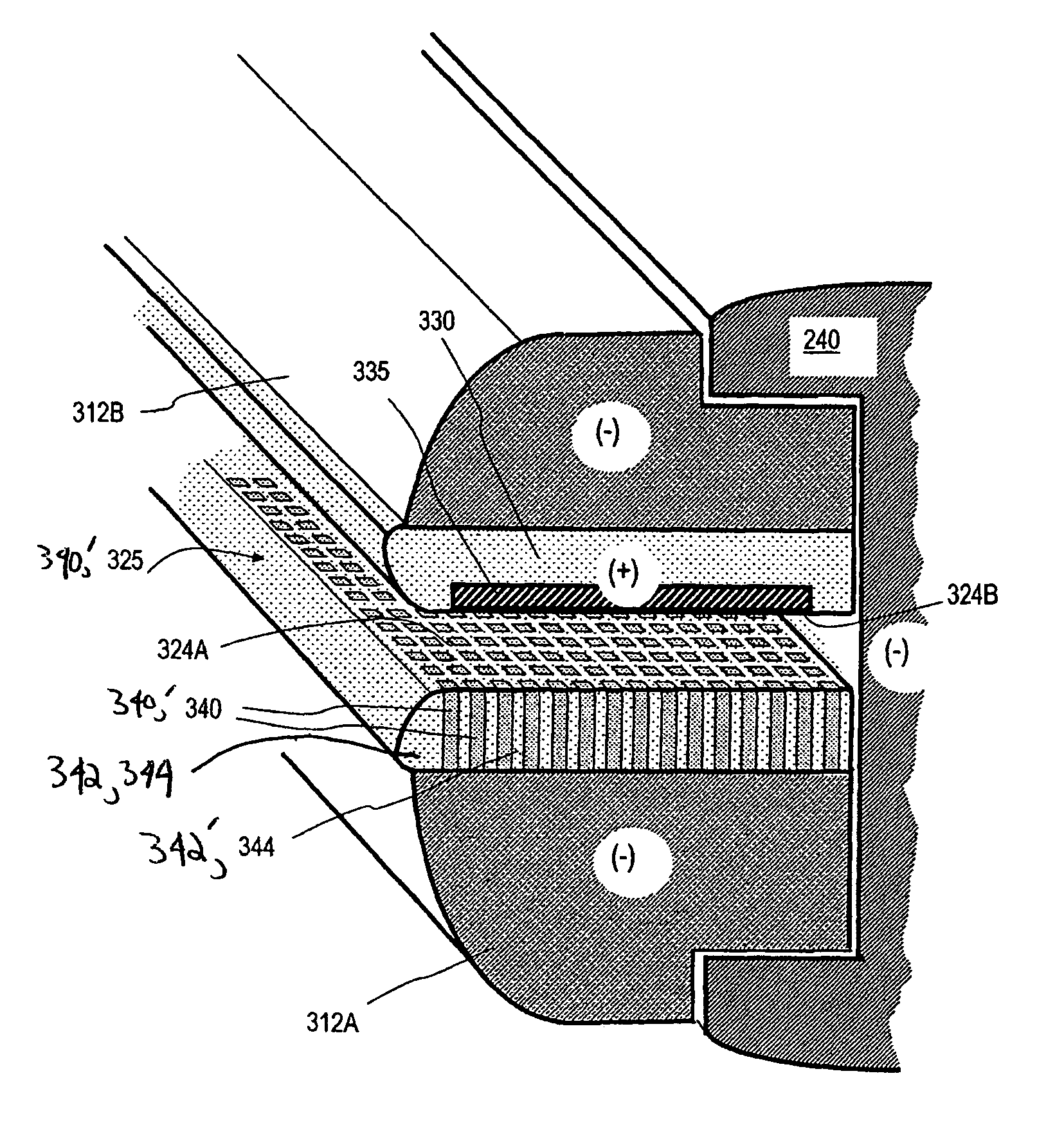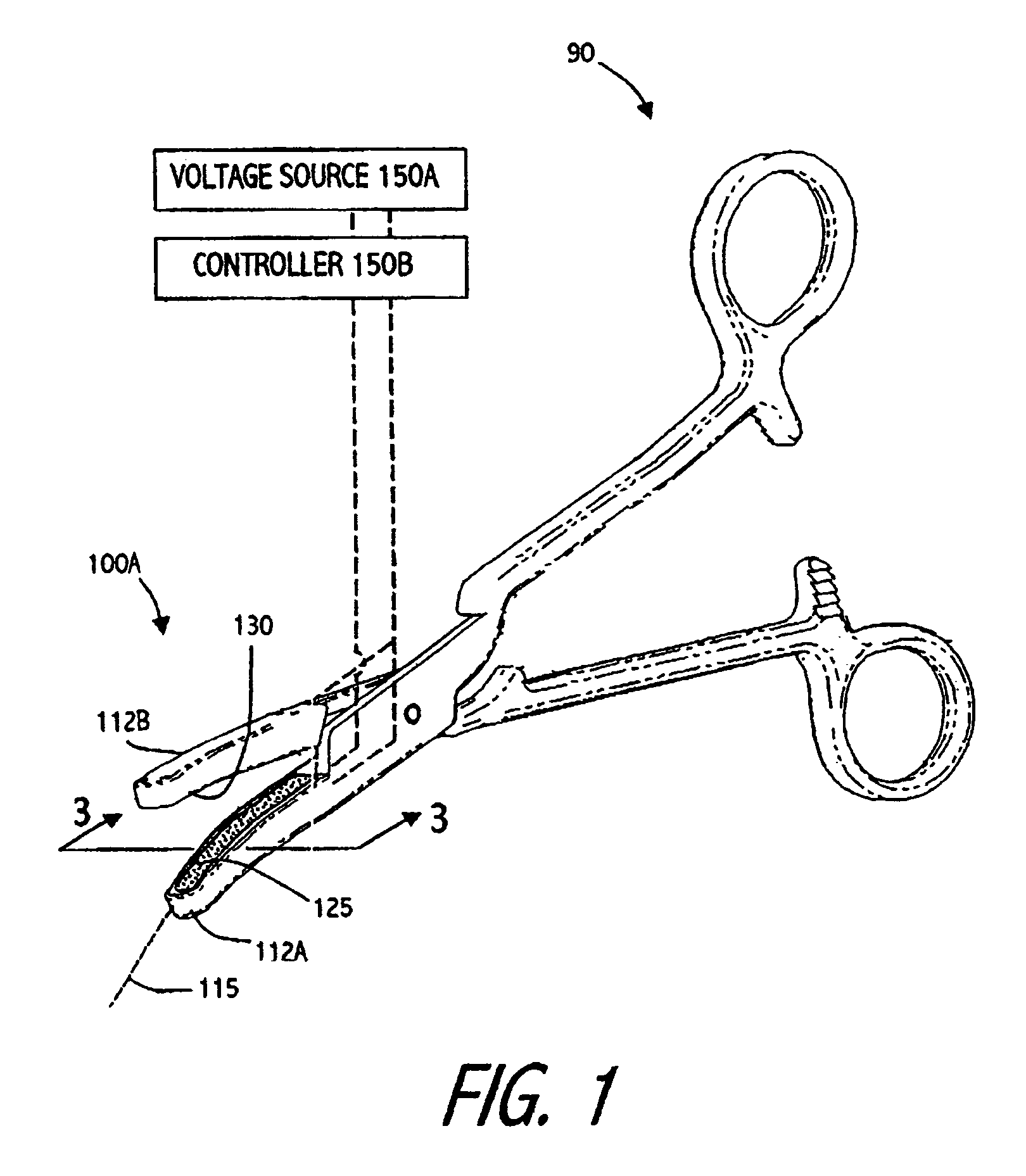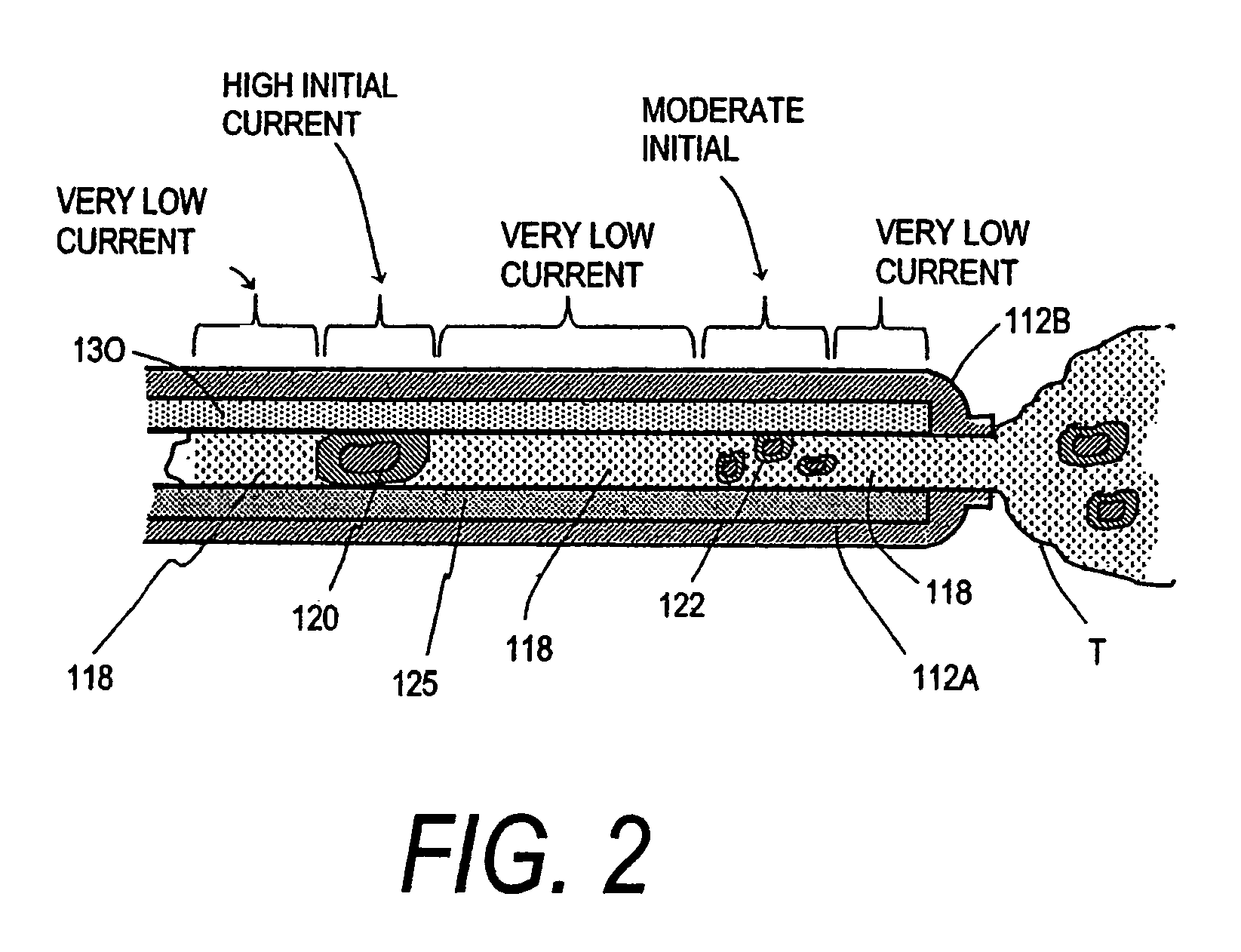Electrosurgical instrument and method of use
a technology of electrosurgical instruments and jaws, applied in the field of electrosurgical jaw structures, can solve the problems of non-uniform denatured tissue not creating a seal with significant strength, and achieve the effects of uniform thermal effect, high localization, and rapid on-off switching of current flow
- Summary
- Abstract
- Description
- Claims
- Application Information
AI Technical Summary
Benefits of technology
Problems solved by technology
Method used
Image
Examples
Embodiment Construction
[0051]1. Electrosurgical jaw structure with variable resistive matrices. Various embodiments of the invention provide systems and methods to deliver energy to targeted tissue volumes in a controlled manner to thermally weld or seal targeted tissue. Particular embodiments provide systems and methods for contemporaneously (i) engaging tissue between paired jaws, (ii) delivering energy to the tissue, and (iii) optionally transecting the tissue to provide a “one-step” welding-transecting procedure. Many embodiments provide a jaw structure configured to engage and weld tissue bundles, that is bundles of disparate tissue types (e.g., fat, blood vessels, fascia, etc.). For the welding of tissue bundles, the jaw surfaces can be configured to apply differential energy levels to each different tissue type simultaneously. Related aspects of the invention provide an electrosurgical system that can apply differential energy levels across the jaws engagement surfaces with “smart” materials withou...
PUM
 Login to View More
Login to View More Abstract
Description
Claims
Application Information
 Login to View More
Login to View More - R&D
- Intellectual Property
- Life Sciences
- Materials
- Tech Scout
- Unparalleled Data Quality
- Higher Quality Content
- 60% Fewer Hallucinations
Browse by: Latest US Patents, China's latest patents, Technical Efficacy Thesaurus, Application Domain, Technology Topic, Popular Technical Reports.
© 2025 PatSnap. All rights reserved.Legal|Privacy policy|Modern Slavery Act Transparency Statement|Sitemap|About US| Contact US: help@patsnap.com



